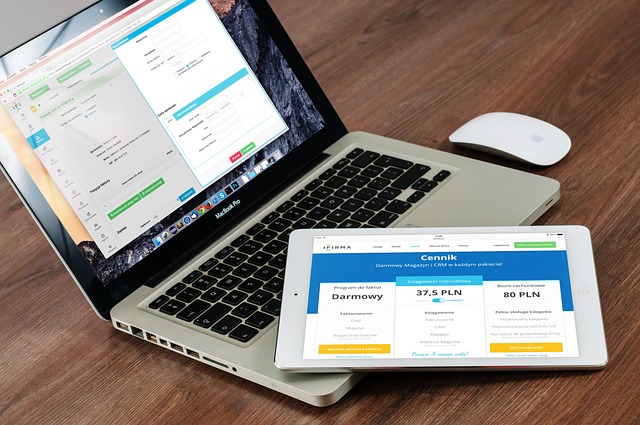Wireframes and prototypes are essential tools in Houston web design, streamlining communication, enhancing user experiences, and guiding development. Wireframes provide a clear visual framework for structure, layout, and functionality, while prototypes enable early testing and iterative refinements based on user feedback. By leveraging these tools, Houston web designers can create engaging, data-driven websites that meet user expectations, optimizing for conversion rates and user satisfaction in the competitive local market.
- Understanding Wireframes: The Foundation of Houston Web Design
- Creating Effective Prototypes for User Engagement
- Integrating Feedback: Refining Your Website Layouts
- Best Practices for Wireframe and Prototype Tools
- Measuring Success: Evaluating the Impact of Wireframes and Prototypes
Understanding Wireframes: The Foundation of Houston Web Design

Wireframes are essential tools in the foundation of effective Houston web design. They serve as basic visual guides that outline a website’s structure, layout, and functionality before any visual elements are added. By focusing on the placement of pages, content, and navigation, wireframes help designers and developers create intuitive user experiences that cater to the needs of visitors.
In the context of Houston web design, understanding wireframes is crucial for establishing clear communication between stakeholders. These simple sketches or digital representations allow teams to quickly iterate and refine website concepts, ensuring that the final product aligns with business objectives and user expectations. Wireframes also facilitate early testing, enabling Houston-based businesses to gather feedback and make necessary adjustments before significant development resources are invested.
Creating Effective Prototypes for User Engagement

In the realm of Houston web design, prototypes play a pivotal role in enhancing user engagement and ensuring the final product meets expectations. Effective prototypes act as a bridge between concept and execution, allowing designers and stakeholders to visually interact with the website before development begins. This interactive process enables quick identification of potential issues and facilitates informed decision-making. By simulating the actual user experience, prototypes help anticipate user behavior, improve usability, and optimize the layout for various devices and screen sizes.
For optimal results, Houston web design professionals should create prototypes that closely mirror the final product in terms of functionality and aesthetics. Incorporating interactive elements, such as clickable buttons and scrollable sections, allows users to navigate through the prototype naturally, fostering a more realistic experience. User feedback gathered during prototype testing can be invaluable in refining the website’s structure, content placement, and overall user flow, ultimately leading to a more engaging and intuitive digital environment.
Integrating Feedback: Refining Your Website Layouts

After creating initial wireframes and prototypes, it’s crucial to integrate feedback from stakeholders and users to refine your Houston web design layouts. This iterative process involves gathering insights and suggestions, which can significantly enhance the user experience. Conducting usability testing allows you to observe how real users interact with the site, identifying pain points and areas for improvement that might not be apparent during initial development.
By incorporating this feedback, you can make data-driven design decisions, ensuring the final product meets user needs and expectations. This refinement process is key to creating a website that’s not only aesthetically pleasing but also highly functional and engaging, ultimately contributing to better conversion rates and increased user satisfaction in the competitive Houston web design landscape.
Best Practices for Wireframe and Prototype Tools

When it comes to planning effective website layouts, utilizing wireframes and prototypes is a game-changer for any Houston web design project. The right tools can streamline the design process, making it easier to visualize and communicate ideas. Look for user-friendly platforms that offer a wide range of features. Interactive prototypes allow you to simulate user interactions, providing valuable feedback early on. This ensures the final product aligns with user expectations and desired outcomes.
Best practices suggest keeping wireframes simple yet detailed. Focus on basic structure and hierarchy before adding visual elements. Consistent labeling and notation across all wireframes facilitate collaboration among team members. Additionally, regular updates ensure that the design evolves with user feedback and changing requirements, resulting in a seamless digital experience tailored to your target audience.
Measuring Success: Evaluating the Impact of Wireframes and Prototypes

Evaluating the success of wireframes and prototypes is a crucial step in the website planning process, especially for Houston web design professionals. These tools serve as a foundation for understanding user behavior and preferences. By creating low-fidelity wireframes, designers can gather initial feedback from stakeholders and potential users, ensuring that the layout aligns with project goals. This early evaluation prevents costly redesigns later in development.
Prototypes take this a step further by providing an interactive representation of the final product. Houston web design teams can use prototypes to test user flows, navigation, and overall usability. Observing how users interact with the prototype offers valuable insights into potential issues or areas for improvement before coding begins. This iterative process enhances collaboration among designers, developers, and clients, resulting in a more efficient and effective website launch.
In conclusion, wireframes and prototypes are indispensable tools in the arsenal of any Houston web designer. By prioritizing user engagement through effective prototyping and iteratively refining layouts based on feedback, designers can create digital experiences that not only meet but exceed user expectations. Adhering to best practices for wireframing and prototyping tools ensures efficiency and accuracy throughout the design process, ultimately leading to successful and impactful Houston web design projects.
